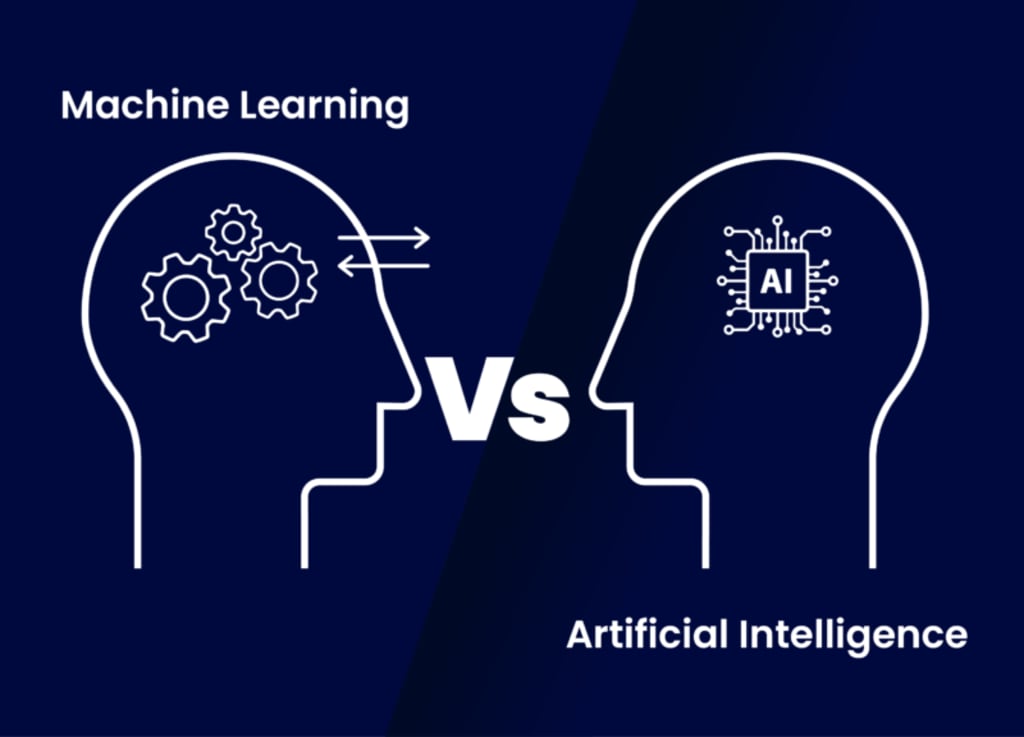The Rise of AI and Machine Learning in Software Development
How AI and Machine Learning are Transforming Software Development: Benefits, Applications, and Future Prospects

The integration of artificial intelligence (AI) and machine learning (ML) in software development has become a transformative force, revolutionizing how applications are built, deployed, and maintained. These technologies are not just buzzwords; they are reshaping the industry by enabling smarter, more efficient, and highly personalized software solutions. In this article, we explore the rise of AI and machine learning in software development, their benefits, real-world applications, and the future they promise.
Understanding AI and Machine Learning
Artificial Intelligence refers to the simulation of human intelligence in machines programmed to think and learn like humans. Machine Learning, a subset of AI, involves the use of algorithms and statistical models to enable computers to perform tasks without explicit instructions, relying on patterns and inference instead.
The Evolution of AI and ML in Software Development
AI and ML have evolved from theoretical concepts to practical tools with substantial real-world applications. This evolution has been driven by several factors:
- Data Explosion: The exponential growth of data from various sources has provided the raw material needed for training sophisticated ML models.
- Computational Power: Advances in hardware, particularly GPUs and cloud computing, have made it feasible to process large datasets and train complex models quickly.
- Algorithmic Innovations: Continuous improvements in algorithms have enhanced the accuracy and efficiency of AI and ML models.
- Open-Source Ecosystem: The proliferation of open-source libraries and frameworks (e.g., TensorFlow, PyTorch) has democratized access to AI and ML tools.
Benefits of AI and ML in Software Development
- Automation of Repetitive Tasks: AI and ML can automate mundane and repetitive tasks, such as code reviews, bug detection, and testing, freeing up developers to focus on more complex and creative aspects of development.
- Enhanced Decision Making: ML models can analyze vast amounts of data to provide insights and predictive analytics, aiding in better decision-making processes.
- Personalization: AI-driven personalization engines can tailor user experiences in real-time, improving engagement and satisfaction.
- Improved Accuracy: AI algorithms can significantly reduce human errors in various stages of software development, from coding to deployment.
Real-World Applications
- Intelligent Code Completion: Tools like GitHub Copilot use AI to provide code suggestions, making coding faster and reducing errors.
- Predictive Analytics: AI models analyze historical data to predict future trends, helping businesses make data-driven decisions.
- Natural Language Processing (NLP): Applications like chatbots and virtual assistants use NLP to understand and respond to user queries, providing instant support and improving customer service.
- Automated Testing: ML-driven testing tools can automatically generate test cases, detect bugs, and even fix them, increasing the efficiency of the testing process.
- Image and Speech Recognition: Applications in healthcare, security, and customer service use AI for recognizing images and processing speech, enabling innovative solutions like diagnostic tools and voice-activated assistants.
Case Studies
- Netflix: Netflix uses ML algorithms to analyze viewing habits and preferences, providing personalized recommendations to its users. This has significantly enhanced user engagement and retention.
- Tesla: Tesla's self-driving cars leverage AI and ML to interpret sensor data and make real-time driving decisions, pushing the boundaries of autonomous vehicle technology.
- Amazon: Amazon's recommendation engine uses ML to analyze purchase history and browsing patterns, suggesting products that customers are likely to buy, thereby increasing sales.
Challenges and Considerations
While AI and ML offer tremendous potential, they also come with challenges:
- Data Privacy and Security: Handling large amounts of data, especially personal data, raises concerns about privacy and security.
- Bias and Fairness: AI models can inherit biases present in the training data, leading to unfair outcomes. Ensuring fairness and reducing bias is critical.
- Complexity: Developing and maintaining AI and ML models require specialized skills and knowledge, which can be a barrier for many organizations.
- Regulation and Ethics: The ethical implications and regulatory requirements of AI applications must be carefully considered, especially in sensitive areas like healthcare and finance.
The Future of AI and ML in Software Development
The future of AI and ML in software development is promising and full of possibilities:
- AI-Driven Development: AI could eventually take on more substantial roles in software development, from writing entire codebases to managing deployment and maintenance.
- Explainable AI (XAI): Efforts are underway to make AI models more transparent and understandable, which will be crucial for gaining trust and regulatory compliance.
- Edge AI: With the proliferation of IoT devices, AI and ML models are being deployed at the edge, enabling real-time processing and decision-making closer to the data source.
- Human-AI Collaboration: The future will likely see a greater emphasis on collaborative AI, where human developers and AI systems work together, leveraging each other's strengths.
Conclusion
The rise of AI and machine learning in software development is reshaping the industry, driving innovation, and opening up new possibilities. From automating routine tasks to providing deep insights and personalization, AI and ML are transforming how software is developed, deployed, and used. As these technologies continue to evolve, they will undoubtedly play an even more integral role in the future of software development, leading to smarter, more efficient, and more powerful applications. Embracing these changes and addressing the associated challenges will be key to harnessing the full potential of AI and ML in this dynamic field.
About the Creator
Enjoyed the story? Support the Creator.
Subscribe for free to receive all their stories in your feed. You could also pledge your support or give them a one-off tip, letting them know you appreciate their work.





Comments
There are no comments for this story
Be the first to respond and start the conversation.